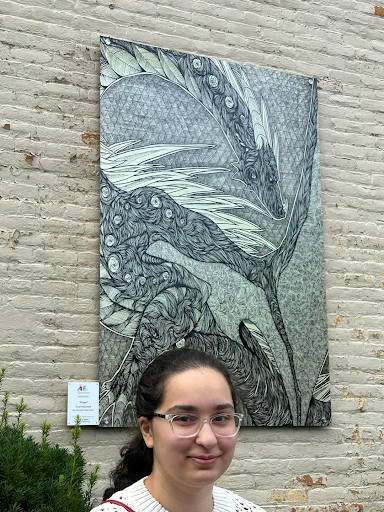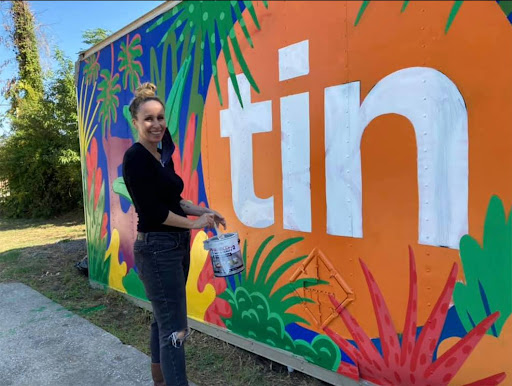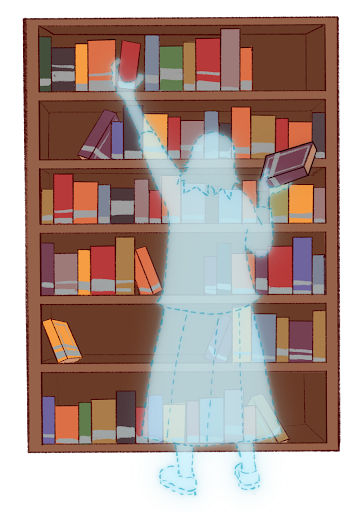With all the change in our world, it’s hard to have constants in one’s life. Every school year, however, Greenhills students can count on one thing—Service Day. This year’s consecutive service days were a shift from previous years, where there was one day in the fall and one day in the winter.
“We’re a 6-12 community, but there are a lot of times that it doesn’t necessarily feel like that in the building,” said Director of Civic Engagement and Service Alyssa Friendly. “We don’t really have a community day. So I feel like all-school service days, like part of the fun is just to hang out with the middle school and upper school.”
Every year, the school devotes two days for local community service in the southeast Michigan area. Since the first service days in 2013, Friendly has expanded from working with a few organizations in the Detroit area to 51 organizations this year all over southeast Michigan. Maybury Elementary School, Blight Busters, and MSU-Detroit Partnership for Food, Learning, and Innovation have worked with the school for over 10 years.
“It’s nice that we can build those longer relationships,” said Friendly. “Those sites are often the more successful sites because they know us and they can plan.”
This year, the Student Leaders in Civic Engagement (SLICE) team made the decision to have two consecutive service days in mid-April. In past years, the team planned for one day in the fall and one day in the spring.
“The two day model is really supposed to encourage a learn and do scenario,” said SLICE Co-Chair Meera Tewari ‘25. “So the first day you may be able to do a little bit more learning about what you’re going to do and then do actual physical work the second day.”
The primary concern with the separate days was the fact that they were about six months apart. It gave students more time to forget what they had learned or done the first day and they were not able to make connections between the two days.
“I think what we [found] on the final weeks before service day is the prep was a lot easier when it was just one day,” said Tewari. “But I think the benefits of having two days next to each other are outweighing any small cons that may come with extra prep.”
While many students went to the same sites or did the same work as they had done in previous years, students in one group did something new. The topic was refugee resettlement and the two days with filled with activities relating to it, including a visit with Ann Arbor Mayor Chris Taylor at Ann Arbor City Hall.
“I thought [the two day format] was better because each day was more connected and we got to really delve deeper into the subjects that we chose,” said Quynh Song ‘28. “Before with the two separate days, I didn’t learn or do as much as I did this year.”
For the refugee resettlement group, the first day began with a speaker from the United Nations High Commissioner for Refugees (UNHCR), Kateryna Pavelko. As a refugee from Ukraine now living in Sweden, Pavelko spoke about her life before the Russia-Ukraine War as well as her work to help those still living in Ukraine.
“I thought it was really interesting to see her experience and what happened to her and what we can do personally to help people like her,” said Song.
Next, the group split up into two smaller groups. One headed to Jewish Family Services, and the other stayed at the school to hear from Hannah Stanton-Gockel, a graduate student at the School of Information at the University of Michigan, about designing refugee camps.
“I really like that we got to learn about people all over the world and not just a small community,” said Song. “In previous year, I’ve done a lot of environmental stuff, but this was interesting to be more invoved in politics and current affairs.”
To wrap up the day, everyone in the group made a trip to Zaman International, a non-profit organization that aids refugees, primarily women, through career development programs, education programs, and other resources. Students took a tour, learned about the process of immigrating to the U.S., and heard the story of a local refugee from Zaman Chief Impact Officer Monica Boomer.
“One of the critical keys to [a refugee’s] success is having the support of their community,” said Boomer. “So whether it’s organizations like Zaman, whether it’s neighbors that reach out and provide assistance, whether it’s groups that want to sponsor families coming from overseas, having that person to person contact is really essential to positive resettlement for refugees.”
To start off the second day, the students traveled to Ann Arbor City Hall and listened to Mayor Chris Taylor speak about the city and its role in aiding refugees in southeast Michigan. This was followed by a tour of City Hall, where students learned about various city issues such as homelessness, transportation, and A2ZERO, the city’s plan to reach community-wide carbon neutrality by 2030.
“I think it’s crucial that young people get involved,’ said Taylor. “It’s good for them, they learn about the world around them, and there’s no better way to learn than to do.”
Finally, to finish off the two days, the group walked to the Downtown Ann Arbor District Library to write letters to Michigan Congressional members advocating for policy change and action.
“It was cool to see a local perspective and learn more about what our city does apart from the other levels of government and what it’s doing for refugees,” said Song. “I really enjoyed putting together everything I learned and take action to solve the issue.”
As student and teacher feedback rolls into the service office, most faculty and students are positive about the new format. Friendly is already thinking about next year.
“Depending on what we find from the feedback, we’ll adjust it or try something else, or if we need to, maybe we’ll do the same two days in April and just make smaller adjustments,” said Friendly. “Yeah, but any kids that have any ideas for anything, bring it on, like let’s look at it and explore it, because that’s how all this stuff got started.”



















